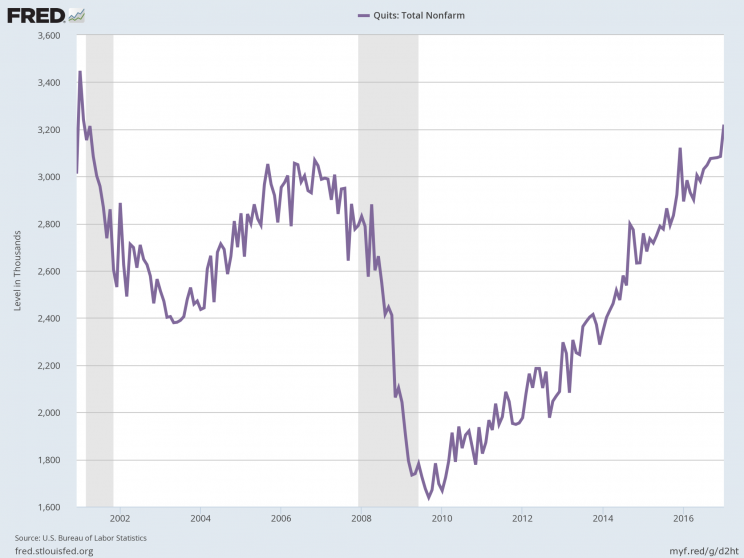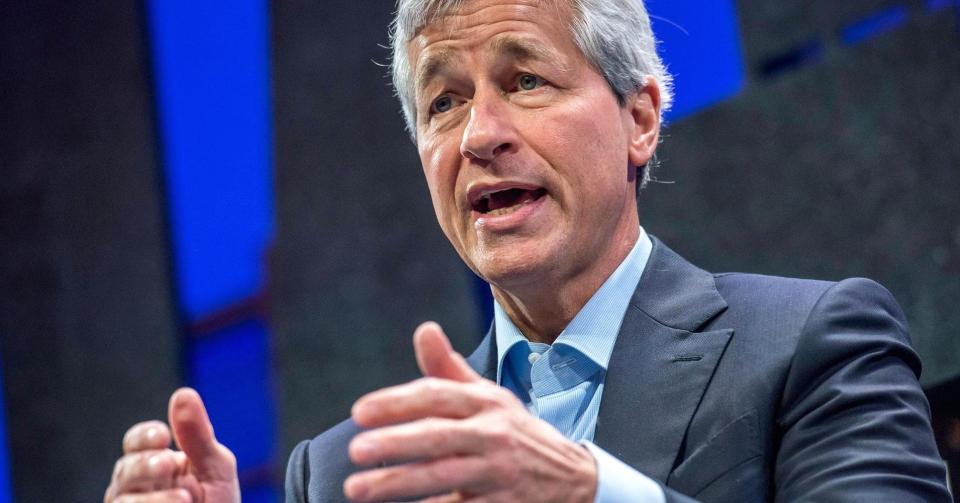Americans are quitting jobs at the fastest pace in 16 years
Employed Americans are quitting their jobs like crazy in another sign that under President Donald Trump, confidence across the U.S. economy is rising.
In January, the number of Americans quitting their jobs rose to a seasonally-adjusted total of 3.22 million, the highest number since February 2001. The quits rate rose in January to 2.2%.
People quitting their jobs in droves is seen as a sign of confidence among workers, as folks are unlikely to quit a job unless they are confident they can get another one.

A new high in job quitters comes amid a flurry of data in the past week showing confidence in the U.S. economy continues to be strong.
Earlier this week, both major U.S. CEOs and American small businesses indicated that confidence remains elevated.
On Tuesday, the Business Roundtable’s CEO Economic Outlook Index jumped 19.1 points to 93.3, the biggest jump since the end of 2009. This index measures expectations for sales, investment, and employment. As with many economic surveys, any reading over 50 indicates expected economic expansion.
JPMorgan (JPM) CEO Jamie Dimon, who is chairman of the Business Roundtable, said, “I am enthusiastic about the opportunity to enact a meaningful pro-growth agenda that will benefit all Americans. As these results confirm, business confidence and optimism have increased dramatically.”

Also on Tuesday, the National Federation of Independent Business released its February reading on small business optimism, which came in at 105.3, slightly down from January’s 105.9, but still near its best levels in a decade. A major highlight in this report was a drop in the number of businesses citing government red tape as their biggest problem.
The NFIB’s report did, however, caution that we haven’t seen a huge translation from this confidence into action. “Optimism has not faded, but the enthusiasm has yet to be translated into an equally impressive increase in spending and hiring,” the NFIB said in its report. “This will require progress on the agenda that business owners voted for.”
Labor participation rising
These survey data also follow last week’s jobs report, which showed that participation in the workforce continues to improve, another sign of growing confidence in the U.S. economy.
In February, the employment-to-population ratio rose to 60%, the highest since February 2009 and an indication that one of the most discouraging labor market trends of the last decade is starting to turn. Among prime-age workers — those between 25 and 54 — participation rose to 81.7% in February, the highest since 2011. At the height of the last cycle, prime age participation topped out at 83.4%.
The quits rate was released in the latest job openings and labor turnover survey — known as the JOLTS report — which showed that in January there were 5.63 million jobs available in the U.S.
In recent years, a steadily increasing number of job openings has come alongside increased hiring, but hiring that remains below the rate of openings. This has highlighted, among other things, the “skills gap” that so many employers and economists discuss as a major factor holding back the U.S. economy.
—
Myles Udland is a writer at Yahoo Finance. Follow him on Twitter @MylesUdland
Read more from Myles here:

